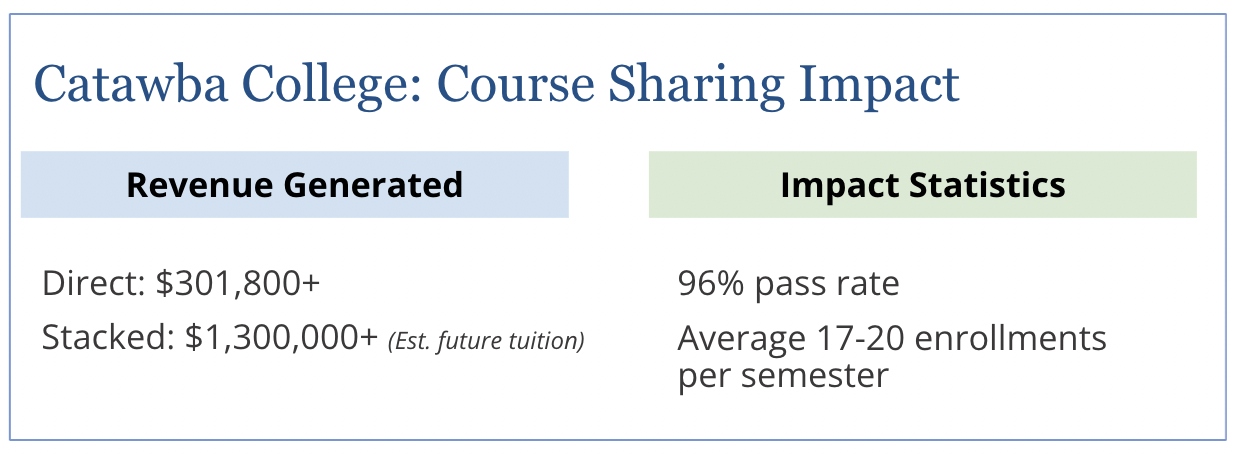In the September 2021, CIC webinar, we explored How to Use Course Sharing Data and ROI to Enhance Your Institution’s Financial Predictability and Stability with representatives from Cornell College and Catawba College.
A Refresher: What is Course Sharing
Through course sharing, colleges and universities can access or share high-quality, peer reviewed courses from like-minded institutions to support student progress and generate revenue. If you’re just getting started, visit our What is Course Sharing resource center.
Why Data and ROI Matters in Your Course Sharing Strategy
At Acadeum, we’re always excited to learn about new ways institutions are supporting students through course sharing. Watch a short testimonial video here to see how seven institutions are helping students overcome hurdles on their path to progress.
We recognize that institutional growth and financial considerations are critical when starting, or expanding, a course sharing strategy. For this webinar, we invited Catawba College and Cornell College to speak to their recent course sharing initiatives that have recovered revenue and increased retention rates and how they’re tracking this impact.
CIC institutions typically base their financial predictability on three metrics: first-year enrollment, the discount rate, and first-to-second year retention. What happens when we add course sharing data to this list?
________
Spotlight On: Catawba College | Instituting a System Approach to Measure Impact
Webinar Speaker: Christine Lynn, Director of Online Programming, Catawba College

Christine has expanded on this success by implementing a strategic approach to course sharing budgeting and ROI tracking, to ensure that increases to revenue from course sharing can easily be tracked back and “given credit.” Now, discussions about course sharing with the campus CFO and Comptroller can center on direct, stacked, and future revenue, and how that revenue can be reinvested in other initiatives at Catawba.
Three Takeaways from Catawba College’s ROI Tracking:
- Students averaged a 96% pass rate from courses taken within CIC’s course sharing network.
- Catawba generated $300K+ in direct revenue from offering open seats on the CIC course sharing network network and by recovering tuition from students that would have been lost to transfer courses.
- Christine estimates Catawba will generate $1.3M in stacked revenue, by tracking the tuition and future progress of 22 students who were at risk of leaving Catawba.
________
Spotlight On: Cornell College | Tracking Student Progress to Recover Students Falling Behind
Featuring: Megan Hicks, Registrar, Cornell College

The Cornell team developed a dashboard to monitor their progress, establish accountability for improving these percentages, and develop strategies and forms of intervention that will raise the percentage of students on track.
Three Takeaways from Cornell College’s Student Progress Tracking:
- Students who fall behind, and face delays to graduation, are much more likely not to stay at their institution. They also risk running out of financial aid and funding.
- Cornell’s course registration process became the de facto means of tracking when students were falling behind.
- In-person intervention with recommended Acadeum courses works: at Cornell, recovering just three students can increase annual retention rates a whole percentage point.






